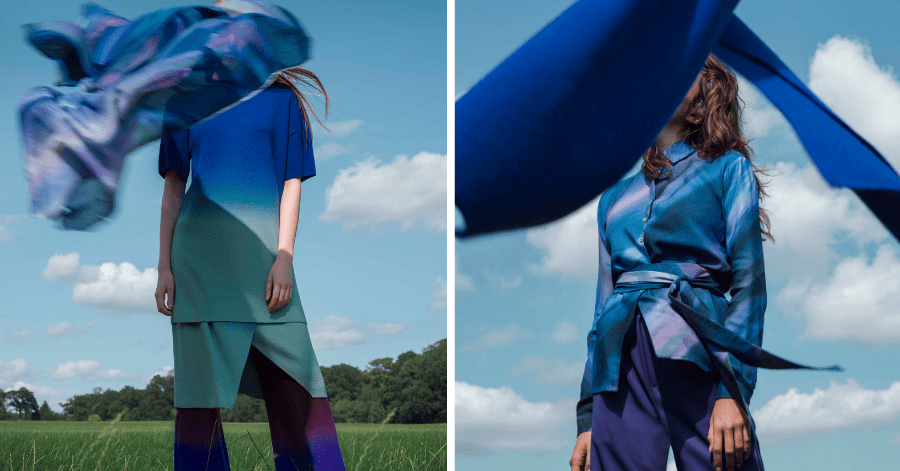As the fashion sector comes to terms with the end of a formulaic era of production, (from creating a collection through to wholesale production) AWAYTOMARS, a collaborative design platform, in partnership with the Business of Fashion, Textiles and Technology Cluster is poised to cross a new creative landscape, pioneering a future in which designers are invited to co-create in new ways using machine learning. We speak with Co-Founder, Alfredo Orobio.
What’s the big idea?

In 2014 AWAYTOMARS (ATM) was born out of a simple but striking idea. What if fashion designers could collaborate as a global community, regardless of location, or stage of career, to create truly innovative designs? The concept was first explored by ATM Co-founder and CEO Alfredo Orobio via a research project at the University of Lisbon in Portugal. It has since grown to become a vibrant online community.
On the ATM platform designers upload their designs for review both by peers and the general public. Tools allow for useful advice and suggestions to be fed back in detail to the designer informing the next iterations. Final designs are put to a public vote and the most popular receive support for development, with factory production, a photo shoot, and a showcase at an international fashion show amongst the help available. Finally, crowdfunding leads to commercial production with a percentage of profit from sales delivered to both the designer and the ATM community members who provided advice along the way, a unique form of profit-share reflecting the multi-authored evolution of the product.
Another unusual aspect of the ATM model is how it encourages creative risk-taking. As Alfredo puts it: “Designers show their work to the ATM community long before the production stage so errors can be freely made and experimentation allowed”.
How did AWAYTOMARS start working with the Cluster?
Established formally as a business in London in 2016, the ATM platform was built on the back of small-scale funding from friends and families of the founding team. By 2019 Alfredo was keen to raise funds for a next-generation version, with more automated systems operating in the background, greater transparency around sales transactions and better usability for the designers. One route pursued was a successful bid for a significant slice of funding (£160,000) from The Business of Fashion, Textiles and Technology (BFTT), the Creative Industries Cluster based at the University of the Arts, London (UAL).
How has the partnership evolved?
The eighteen month project the ATM and BFTT eventually devised kicked off in May 2020, and aims to take the platform to a whole new level by introducing Artificial Intelligence (AI) as a co-creator alongside designers. Alfredo had no previous experience of working with machine learning and only a nascent knowledge of AI technologies but he wondered if algorithms could be trained to inspire designers in new directions, to co-create aspects of a product, from fabric design to garment shape?
Together the teams have been working on applying AI techniques in the early stages of the ATM creative process. To date many, many combinations of algorithms have been tested using a huge range of data sets, and significant progress has been made on developing the AI software.
ATM has always placed huge value on beauty in design, and this has been reflected in the build process, with the quality of the data sets a priority throughout development. It is ground-breaking work, or as BFTT Co-Director Professor Jane Harris has put it “One of the most interesting and genuinely ‘creative’ technology innovations in this sector I’ve seen in the past 25 years”.
The BFTT Cluster has provided a package of support including cash funding, and a dedicated post-doctoral level research fellow with industry experience. Practical support has also included advice on project design, business planning and implementation, and access to industry contacts and various user groups. Alfredo describes the partnership as “…a huge advantage. We get access to a group of people who are ahead of their time thinking of solutions, and we get access to brilliant consultants at the UAL Digital Anthropology Lab. We can just grab the phone any time and speak with them”.

What does the future hold?
An experimental project with M. Missioni demonstrated the potential for collaborations with major global brands, with algorithms trained on archive data of the brand’s trademark zig-zag knitwear to produce a new set of products. At the concept stage ideas were analysed against Missoni’s and wider market data to assess commercial viability. A licencing model for the software may also have a place in the business plan and there are opportunities eyed for a similar creative technology approach beyond fashion for example in live experience contexts.

